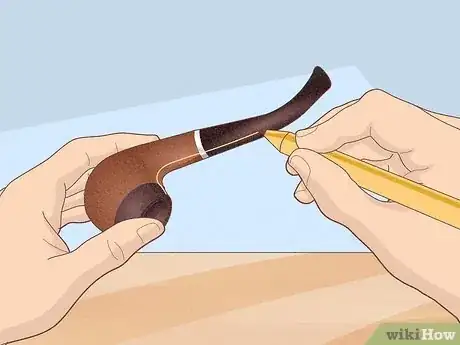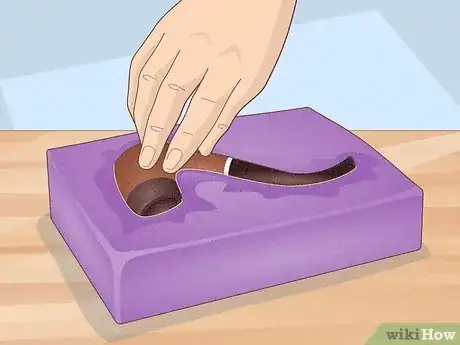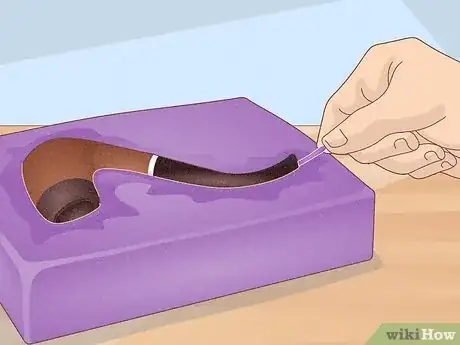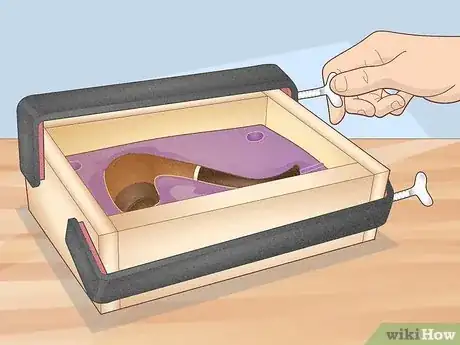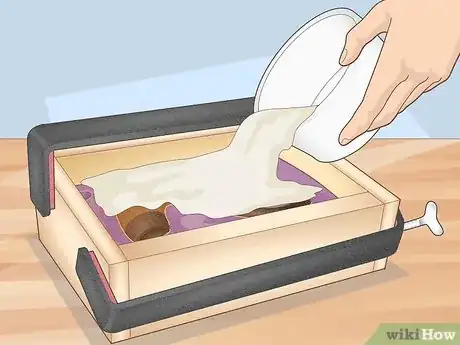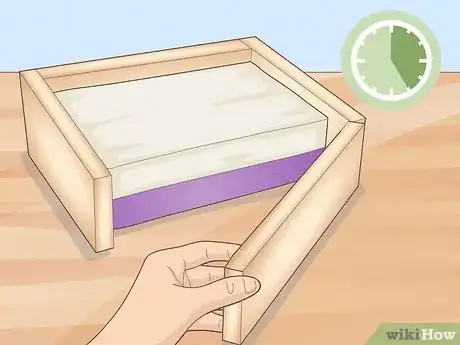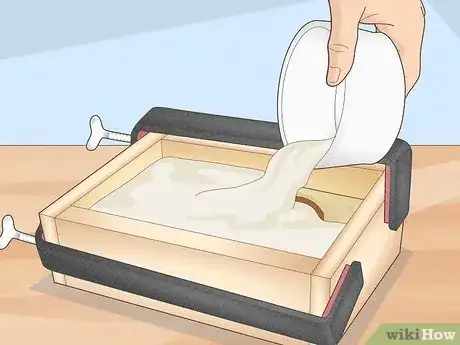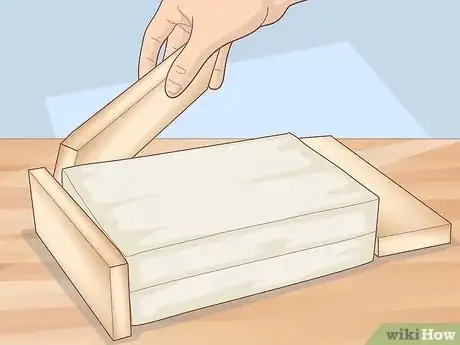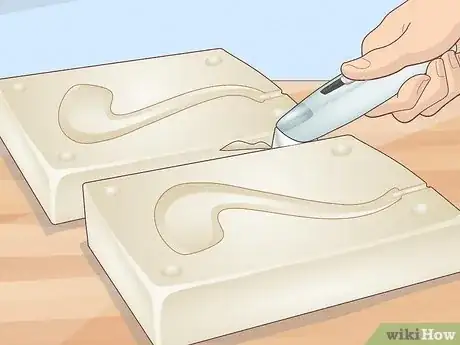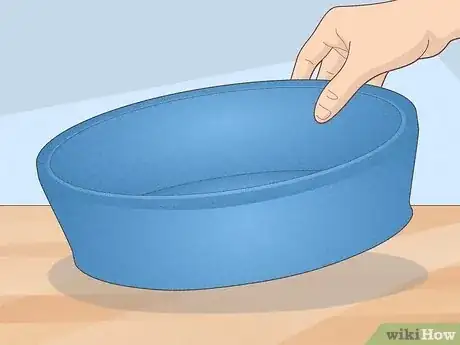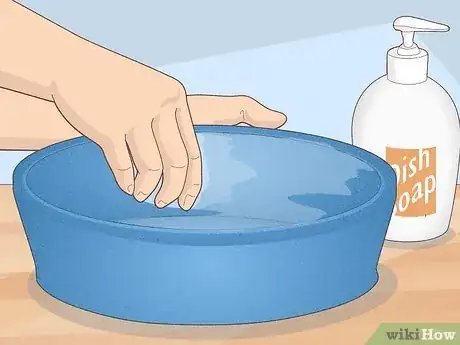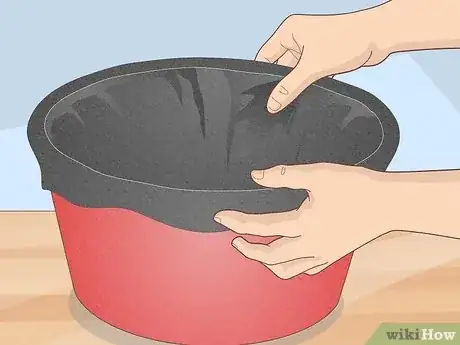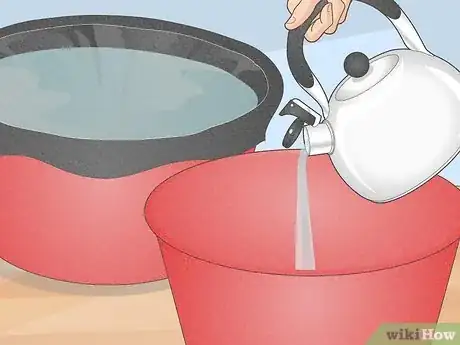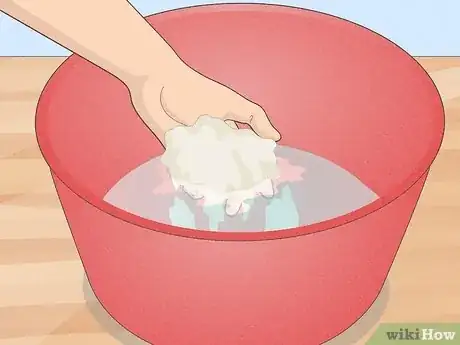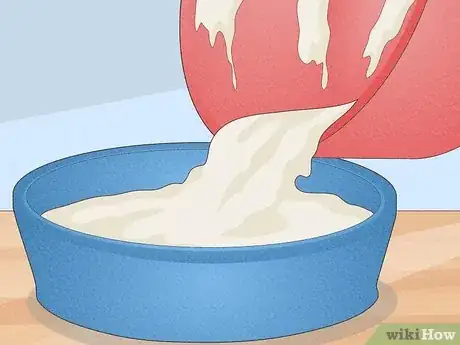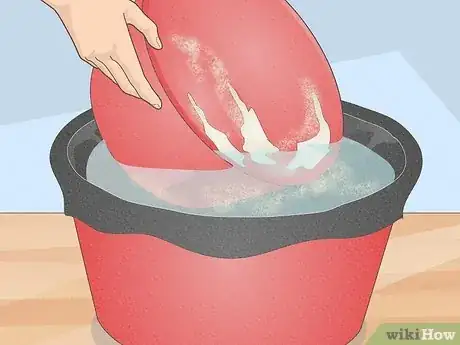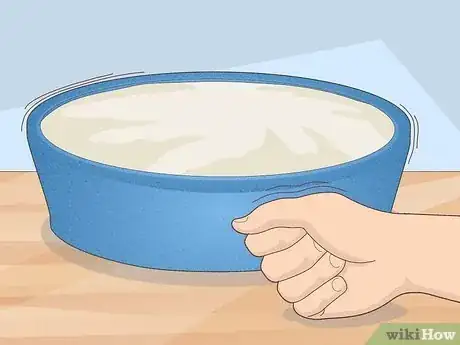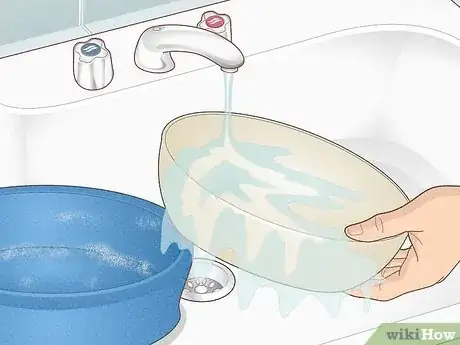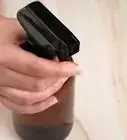This article was co-authored by wikiHow Staff. Our trained team of editors and researchers validate articles for accuracy and comprehensiveness. wikiHow's Content Management Team carefully monitors the work from our editorial staff to ensure that each article is backed by trusted research and meets our high quality standards.
There are 10 references cited in this article, which can be found at the bottom of the page.
This article has been viewed 9,660 times.
Learn more...
Whether you’re looking for a one-time project, a new hobby, or a new way to express yourself as an artist, plaster molds can be great for art projects. From figurines to tableware to wall hangings, they can provide molds to make for fun expressions of your creative side, cute hand-made gifts, and more. In this piece, we will look at how to make two kinds of plaster molds: two-part plaster molds and one-part plaster molds. While a two-part mold might be easier for smaller objects such as figurines, a one-part mold will be easier to use for larger objects such as plates and bowls. You can create your own custom mold, making a prototype out of materials such as clay, or base your mold out of items you have around the house, from action figures to sea shells to bowls.
Steps
Two-Part Plaster Molds
-
1Pick an item and establish the parting line. You can make your model item out of clay or simply use an object from around the house. The parting line should effectively split the item in half — this will be the separation point between the two parts of the mold. Once you establish this, use a dye-marking felt tip pen to mark where that line is on the object.[1]
-
2Lay your item flat on a slab of modeling clay or playdough and mold the clay around it. Make sure that the parting line you just drew is parallel to the slab and mold up to that line so that the back half of the item is covered by the clay. The clay should form a square that extends at least 1 inch (2.5 cm) out from each side of the object. Smooth out the clay once you’re done.[2]Advertisement
-
3Create a pour spout. This spout will allow you to pour plaster, wax, or other materials into the final mold once you’re ready to use it. Place a roll of clay (or other small cylindrical object) at the bottom of the object you’re making a mold of and mold the clay around it. Make sure that it reaches the bottom edge of the clay. This way, the plaster will mold itself around the spout when you pour it.[3]
-
4Press keys into the clay. These are round holes or indents that will eventually allow the two halves of the mold to interlock. Put them in the corners or along the sides of the clay. You can use any number of tools to make them, from a spatula to a small coin.[4]
-
5Cut off the jagged edges of the clay, then apply two thin coats of orange shellac. Completely cover the item and the surface of the clay. Wait 15 to 20 minutes, then lightly dust the item and the clay with baking soda.[5]
-
6Apply a release agent to the surface. A soft brush can make the process easier. If you don’t have a commercial release agent, there are various common household products you can use, such as oil soap, vaseline, vegetable oil, and liquid hand soap.[6] Once you’re done, dry the brush and pick up any excess release agent. Make sure that the item and the parting line area of the clay are slick.
-
7Set up 4 casting boards. These are wood boards that will help keep the plaster you pour within the desired bounds. Wipe each of them with the aforementioned release agent on the front-facing surface and edges, then assemble them around the clay. Secure them with C-clamps and mold the clay to seal the edges where the clay meets the boards.[7]
- If you don’t have wooden boards, you can use household items such as a plastic container to contain the clay and plaster. But make sure it’s something you don’t mind dedicating to the project, as you’ll want to cut out the bottom of the container before using it as a substitute for casting boards.
- Ensure that the casting boards are taller than the item you’re creating a mold of.[8]
-
8Mix your plaster and pour it over the clay and item. Mixing should take about a minute and a half and result in an even consistency. It also helps to reduce air bubbles if you start pouring from a corner of the clay and let the plaster spread from there as you pour. The plaster should fill the area with a thickness of at least one inch (2.5 cm) above the highest point of the item you’re using as a model. This will serve as the first half of your two-part mold.[9]
-
9Let the plaster set for about 20 minutes, then remove the perimeter or casting boards. Smooth out the sides and flip the mold over and remove the clay. Make sure you wash off any plaster from the clay if you plan to reuse it in the future! And similarly, clean off any clay that got stuck to the plaster.[10]
-
10Repeat the plaster-mold process for the second side of your model. Start by re-applying baking soda and your release agent. Then set up your casting boards and mix and pour your plaster.[11]
-
11Let the plaster set for 30 minutes, then remove the casting boards. Smooth the sides of the plaster and scrape off any excess plaster that might have run down the side of the first half of your mold.[12]
-
12Open the mold. Now that you’ve got both sides of your two-part mold, it’s time to separate them. Insert a flathead screwdriver or a wood wedge into the parting line between the two halves and tap it gently with a hammer.
- When the two halves start to part, turn them over and repeat the process on the opposite side.
- Once the mold is loose, gently pull the two halves apart.
-
13Remove the model item and clean the plaster. Sometimes the item you used will stick to one part of the mold. If this happens, use a screwdriver to ease it out. If it proves difficult to pry out, it helps to place a flat piece of wood under the screwdriver. This way, you reduce the risk of chipping the plaster.[13]
-
14Remove any excess pieces of plaster, then let your mold dry before use. The drying process can take 4 or 5 days, depending on the weather, but soon enough, you’ll have a ready-to-use mold. Admire your handiwork and get ready to have some fun.[14]
One-Part Plaster Molds
-
1
-
2Let the mold dry if you made it from clay, then coat the object with a release agent. Let it dry to the point where if you touch it, your fingerprint won’t show. (This might take 1–3 days.)[16] You might also want to do another once-over to smooth out any unwanted markings before coating the prototype with a thin layer of a release agent (you can use sandpaper or even just your hands). The release agent can be something as simple as soap, and while this step isn’t strictly necessary, it can help make it slightly easier to peel away the plaster later.[17]
-
3Line a large bucket with a trash bag and put on respirator.[18] The trash bag will make the bucket easier to clean and reuse later, and the mask will ensure that you’re not breathing in any dangerous particulates. It should be a NIOSH-approved quality respirator for fine particulates, and you’ll want to wear it until you’re sure that you’re done and you’ve put the dry plaster away. Safety first![19]
-
4Add regular water to the bucket with the trash-bag lining and warm water to a second bucket. The first bucket will serve as a rinsing bucket, while the second will be the bucket where you add the plaster itself. With the second bucket, you can eyeball how much water you’ll need based on the size of the mold you’re making. (You’ll need enough to dissolve the plaster into the water.)[20]
-
5Gently rub a handful of pottery plaster into the non-lined bucket. The first time you do this, the plaster should dissolve into the water. Repeat this process until there’s a lump of plaster in the bucket that doesn’t immediately disappear.[21]
-
6Cup one hand in a C shape and use it to gently mix the plaster in the water. Break up the chunks of plaster until you get a smooth texture while trying to minimize bubbles. You want the mixture to be the consistency of heavy whipped cream, so if the mixture feels too thin, use your dry hand to add more plaster.[22]
- This step might dry out your hands a bit, so those who are sensitive to that might want to wear gloves. That said, the plaster isn’t typically harmful to touch with your bare hands.
-
7Pour the plaster onto your mold slowly and carefully. Only pour at the edge, letting the plaster slowly fill the space from there. This method will help reduce air bubbles. Also keep in mind that while you want to be careful and methodical, the plaster tends to set within five to ten minutes, so you don’t want to act too slowly.[23]
-
8Pour the excess plaster into the lined bucket and rinse the plaster from the non-lined bucket. This step shouldn’t take too long, and don’t worry if you don’t do a super thorough job — the point here is just to prevent too much plaster from setting in the non-lined bucket.[24]
- Keep in mind that you don’t want to pour any plaster down the sink, as that can clog pipes. This is where the water in the lined bucket comes in handy — you can clean up without worrying about your pipes![25]
-
9Return to your mold while it’s still wet and get rid of air bubbles. To do this, you’ll want to give the mold a gentle jiggle so that the bubbles rise to the surface. Keep jostling it until you no longer see any air bubbles escaping.[26] There are a few ways you can do this:
- Lightly nudge the table with your hip.
- Use your fist to pound the table.
- Grip the edge of the table and gently shake it.
- Any other method that works for you without being too rough!
-
10Let the plaster set, then remove it from the prototype and wash it. It might take about an hour for the plaster to set, and it will likely get warm partway through the process. Wait until it cools and sets, and then you can remove the mold. Once you’ve done that, wash the plaster and let it dry completely. Then you can enjoy using your new mold![27]
Things You'll Need
Two-Part Plaster Molds
- The item you want to make a mold of
- Dye-marking felt tip pen
- Modeling clay or play-dough
- Scalpel or other tool to cut away excess clay
- Orange shellac
- Soft brush
- Release agent such as liquid soap, vaseline, or vegetable oil
- Wood casting boards or plastic container that you don’t mind ruining
- Pottery plaster
- Flathead screwdriver and/or wood wedge
- Hammer
- Sandpaper or other materials to smooth out the plaster
- C-clamps
- Baking soda
===One-Part Plaster Molds===
- Clay
- Release agent such as soap (optional)
- Two large buckets
- Large trash bags
- NIOSH respirator
- Water
- Pottery plaster
References
- ↑ https://labs.art.fsu.edu/wp-content/uploads/2019/08/How-to-Mold-Making.pdf
- ↑ https://labs.art.fsu.edu/wp-content/uploads/2019/08/How-to-Mold-Making.pdf
- ↑ https://opusartsupplies.com/sites/default/files/how_to/2part_mold.pdf
- ↑ https://opusartsupplies.com/sites/default/files/how_to/2part_mold.pdf
- ↑ https://labs.art.fsu.edu/wp-content/uploads/2019/08/How-to-Mold-Making.pdf
- ↑ https://bigceramicstore.com/pages/info-ceramics-tips-tip45_use_plaster_molds
- ↑ https://labs.art.fsu.edu/wp-content/uploads/2019/08/How-to-Mold-Making.pdf
- ↑ https://labs.art.fsu.edu/wp-content/uploads/2019/08/How-to-Mold-Making.pdf
- ↑ https://labs.art.fsu.edu/wp-content/uploads/2019/08/How-to-Mold-Making.pdf
- ↑ https://labs.art.fsu.edu/wp-content/uploads/2019/08/How-to-Mold-Making.pdf
- ↑ https://labs.art.fsu.edu/wp-content/uploads/2019/08/How-to-Mold-Making.pdf
- ↑ https://labs.art.fsu.edu/wp-content/uploads/2019/08/How-to-Mold-Making.pdf
- ↑ https://labs.art.fsu.edu/wp-content/uploads/2019/08/How-to-Mold-Making.pdf
- ↑ https://labs.art.fsu.edu/wp-content/uploads/2019/08/How-to-Mold-Making.pdf
- ↑ http://www.lindalevy.com/uploads/3/4/1/5/34159314/moldmakingtechniques3.pdf
- ↑ https://thepotterywheel.com/how-long-does-it-take-for-pottery-clay-to-dry
- ↑ https://theartofeducation.edu/2015/04/13/a-simple-step-by-step-guide-to-slip-casting/
- ↑ https://www.brilarson.com/blog/technique/making-a-one-part-plaster-mold
- ↑ https://thepotterywheel.com/how-to-make-a-plaster-hump-mold-for-clay
- ↑ https://thepotterywheel.com/how-to-make-a-plaster-hump-mold-for-clay/
- ↑ https://theartofeducation.edu/2015/04/13/a-simple-step-by-step-guide-to-slip-casting/
- ↑ https://thepotterywheel.com/how-to-make-a-plaster-hump-mold-for-clay/
- ↑ http://www.lindaarbuckle.com/handouts/Plaster.pdf
- ↑ https://www.brilarson.com/blog/technique/making-a-one-part-plaster-mold
- ↑ http://www.lindaarbuckle.com/handouts/Plaster.pdf
- ↑ http://www.lindaarbuckle.com/handouts/Plaster.pdf
- ↑ http://www.lindaarbuckle.com/handouts/Plaster.pdf
